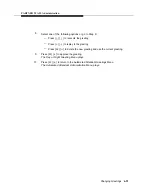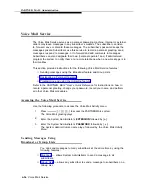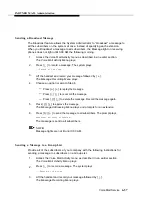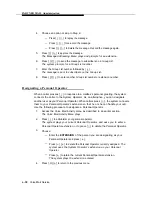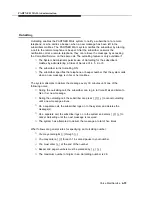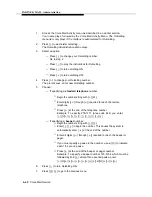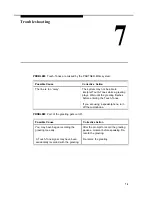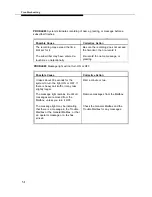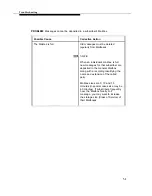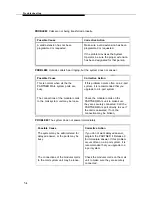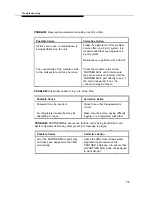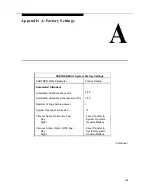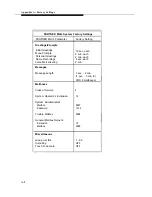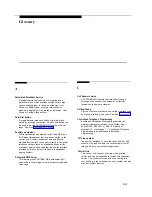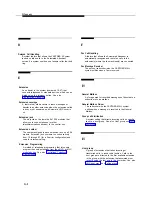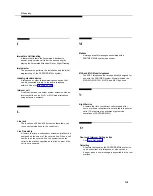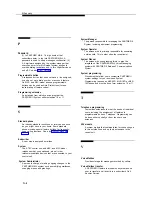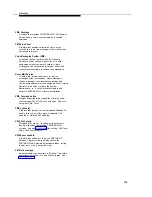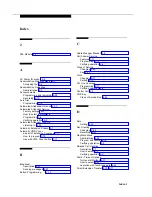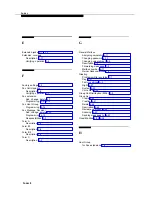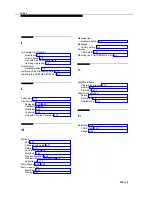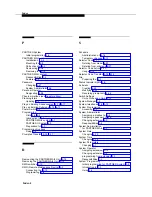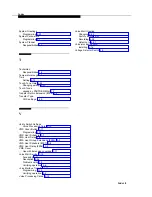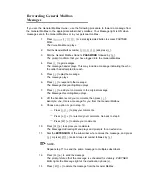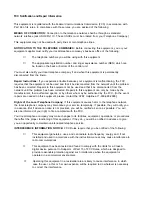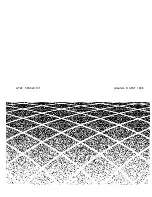
Glossary
D
Delayed Call Handling
A system feature that allows the PARTNER II System
to send outside calls to the Automated Attendant
service if a system user does not answer after the third
ring.
E
Extension
An endpoint in the system (numbered 10-57) that
connects telephones or standard devices, which can be
dialed using the Intercom button. See also
Extension coverage
A feature that allows callers to leave messages or
transfer to another extension when the extension called
is busy or not answered, and Automatic VMS cover is
on.
Extension jack
The six jacks on the lower half of 206 modules that
allow you to connect phones (or other
telecommunications devices) to the control unit.
Extension number
The number assigned to each extension jack on a 206
module. Extension jack numbers run consecutively
from 10 through 57 (for a 2-carrier configuration) and
used for intercom calling.
Extension Programming
A method of telephone programming that lets users
program their own extensions from their MLS- or MLC-
model phones. See also Centralized Telephone
F
Fax Call Handling
A feature that allows the Automated Attendant to
automatically recognize and route fax calls to the
extension(s) where the fax machines(s) are connected.
Fax Message Receiver
The person (subscriber) who the PARTNER MAIL
system notifies when a fax is received.
H
General Mailbox
A storage area for recorded messages not directed to a
subscriber’s voice mailbox.
General Mailbox Owner
The subscriber who the PARTNER MAIL system
notifies when a message is received in the General
Mailbox.
Group call distribution
A system setting that directs incoming calls on specific
lines to a hunt group. See also Hunt group and VMS
hunt group.
H
Hunt group
A group of extensions that takes incoming or
transferred calls in round-robin fashion. Calls to the
hunt group are directed to the first available extension
in the group, with the extension that answered most
recently being the last one in the hunt order. See also
VMS hunt group and Calling group.
G-2

